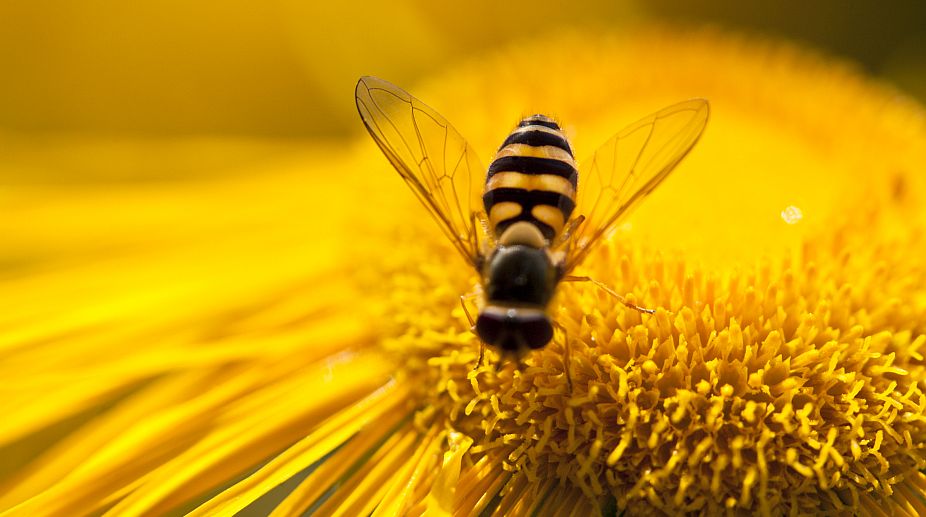Honey bees have much better vision than was previously known, according to a new study that paves the way for translating this knowledge into fields such as robot vision.
The findings come from “eye tests” given to western honey bees – also known as European honey bees (Apis mellifera).
Bee vision has been studied ever since the pioneering research of Karl von Frisch in 1914, which reported bees' ability to see colours through a clever set of training experiments.
Advertisement
“Among other things, honey bees help to answer questions such as: how can a tiny brain of less than a million neurons achieve complex processes, and what are its utmost limits?” said Elisa Rigosi from Lund University in Sweden.
“In the last few decades it has been shown that bees can see and categorise objects and learn concepts through vision, such as the concept of 'symmetric' and 'above and below',” said Rigosi.
“Previous researchers have measured the visual acuity of bees, but most of these experiments have been conducted in the dark,” said Steven Wiederman from University of Adelaide in Australia.
“Bright daylight and dark laboratories are two completely different environments, resulting in anatomical and physiological changes in the resolution of the eye,” said Wiederman.
Researchers set out to find the smallest well-defined object that a bee can see and second, how far away it can see.
To do so, the researchers took electrophysiological recordings of the neural responses occurring in single photoreceptors in a bee's eyes.
The photoreceptors are detectors of light in the retina, and each time an object passes into the field of vision, it registers a neural response.
“We found that in the frontal part of the eye, where the resolution is maximised, honey bees can clearly see objects that are as small as 1.9 degrees – that's approximately the width of your thumb when you stretch your arm out in front of you,” said Rigosi.
“This is 30 per cent better eyesight than has been previously recorded,” she said.
“In terms of the smallest object a bee can detect, but not clearly, this works out to be about 0.6 degrees – that's one third of your thumb width at arm's length,” she added.
“This is about one third of what bees can clearly see and five times smaller than what has so far been detected in behavioural experiments,” said Rigosi.
The results show that bees have the chance to see a potential predator and thus escape, or perceive landmarks in the environment better than we expected, she said.
“Importantly, these findings could also be useful in our work on designing bio-inspired robotics and robot vision, and for basic research on bee biology,” Wiederman said.
The research appears in the journal Scientific Reports.
Advertisement











